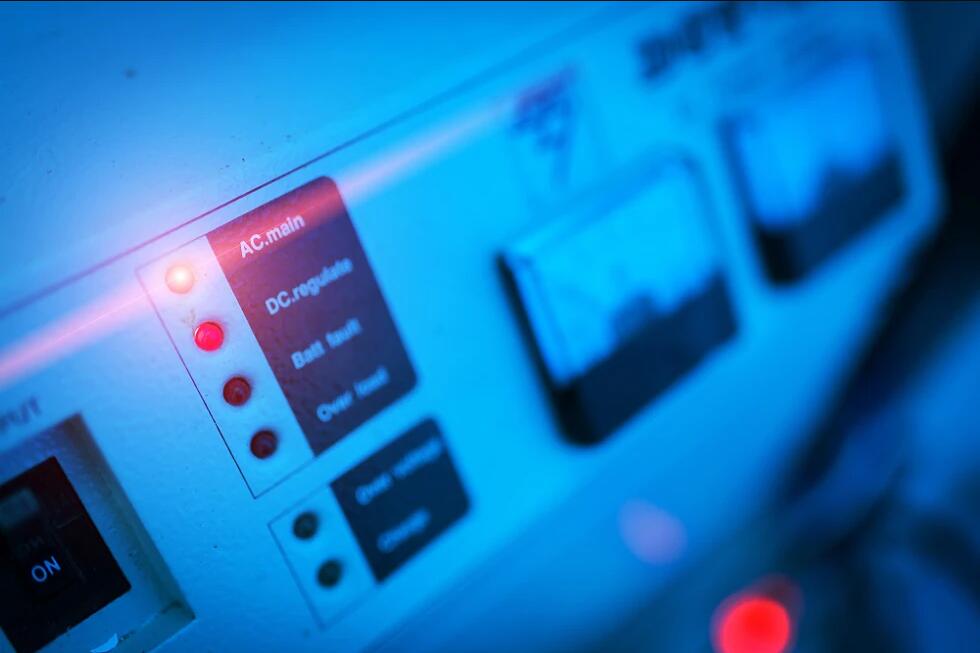
UPS uninterruptible power supply requirements for inverters
The inverter is located between the rectifier and the static switch in the UPS uninterruptible power supply. It is the core part of the uninterruptible power supply device. It mainly converts the direct current output by the rectifier or the battery into 50Hz alternating current, and then sends it to the static switch before supplying. To load equipment.

General UPS power supply requirements for inverters are as follows:
(1) The output AC voltage must be stable. Regardless of the input voltage fluctuations or voltage fluctuations caused by other conditions, the inverter output voltage is required to be within a stable accuracy range, which is generally ±2% in static conditions.
(2) The frequency of the output AC power should also be within the stable accuracy, and it is generally ±o.5% in static state.

(3) The output voltage and frequency of the inverter should be adjustable. The adjustable range of output voltage is ±5%, and the adjustable range of output frequency is ±2Hz.
(4) With overload protection capability, it can generally overload 125% to 150%. When the overload is 150%, it must be able to last for 30s, and when the overload is 125%, it must be able to last for 1 min or longer. The overload protection capacity of Burke UPS power supply can reach normal operation at 115%, 10m at 125%, 1m at 150%, and 1s at 200%.
(5) The output waveform is a sine wave to reduce harmonic distortion. Generally, the output small distortion rate should be controlled within 7%, which is conducive to reducing the size of the filter.
(6) It has protection and alarm functions such as short circuit, overload, overheating, overvoltage, under voltage, etc.
(7) The starting must be stable, the starting current must be small, and the operation must be stable and reliable.
(8) It can recover the commutation energy and minimize the commutation loss to improve the efficiency of the inverter.
(9) It should have a fast transient response.
The inverter is located between the rectifier and the static switch in the UPS uninterruptible power supply. It is the core part of the uninterruptible power supply device. It mainly converts the direct current output by the rectifier or the battery into 50Hz alternating current, and then sends it to the static switch before supplying. To load equipment.

General UPS power supply requirements for inverters are as follows:
(1) The output AC voltage must be stable. Regardless of the input voltage fluctuations or voltage fluctuations caused by other conditions, the inverter output voltage is required to be within a stable accuracy range, which is generally ±2% in static conditions.
(2) The frequency of the output AC power should also be within the stable accuracy, and it is generally ±o.5% in static state.

(3) The output voltage and frequency of the inverter should be adjustable. The adjustable range of output voltage is ±5%, and the adjustable range of output frequency is ±2Hz.
(4) With overload protection capability, it can generally overload 125% to 150%. When the overload is 150%, it must be able to last for 30s, and when the overload is 125%, it must be able to last for 1 min or longer. The overload protection capacity of Burke UPS power supply can reach normal operation at 115%, 10m at 125%, 1m at 150%, and 1s at 200%.
(5) The output waveform is a sine wave to reduce harmonic distortion. Generally, the output small distortion rate should be controlled within 7%, which is conducive to reducing the size of the filter.
(6) It has protection and alarm functions such as short circuit, overload, overheating, overvoltage, under voltage, etc.
(7) The starting must be stable, the starting current must be small, and the operation must be stable and reliable.
(8) It can recover the commutation energy and minimize the commutation loss to improve the efficiency of the inverter.
(9) It should have a fast transient response.




